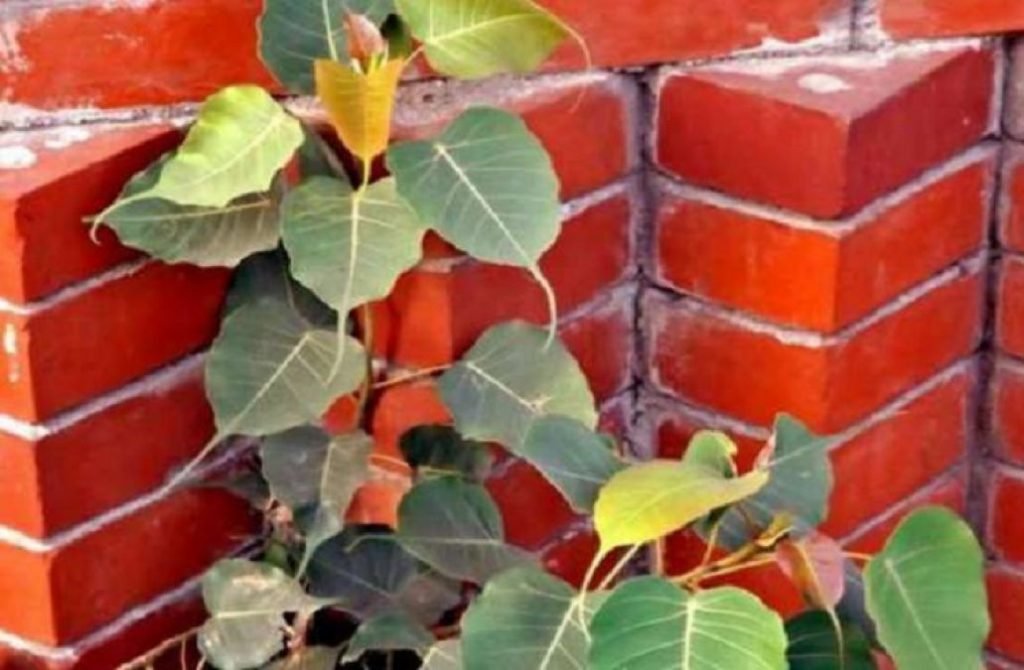Glyphosate is the active ingredient in non-selective, systemic herbicides sold under a variety of names — Round Up, Accord, Glypro, Glyphosate and many others.

It commonly kills weeds and weed roots in landscape settings. Used to eliminate weeds and weeds because it is economical, controls a wide spectrum of weeds, and is easy to use. This can be unforgivable because it is non-selective, and an accidental overspray can be disastrous to crop plants. This is especially true for young trees that have thin bark, and often have chlorophyll in their bark. Late-season errant use for these non-target trees results in sub-lethal damage, and the effects can last for years.
Also Read Here’s why Peepal tree has strong religious and spiritual significance; Medicinal and therapeutic benefits
Glyphosate is a systemic herbicide that binds to the phloem (living tissue in vascular plants) that transports soluble organic compounds formed during photosynthesis and known as photosynthesis, especially the sugar sucrose, into parts of the plant where This transport process is called translocation.) and gets stored in the roots. That’s why it “kills weeds, roots and all.” It breaks down quickly in the soil. However, when accidentally over-spraying the thin or pigmented bark of young trees, glyphosate accumulates in the phloem and can take years to break down.

It is then transferred to the roots along with the sugars in the fall. When the sap germinates the following spring, with it containing glyphosate, the injury can persist for many years even after misuse.
Dr. Hannah Mathers, an independent nursery crop/landscape consultant with Mathers Environmental Services, LLC, researched splitting nursery and landscape tree bark during her time at The Ohio State University. She found that late-season glyphosate applications had absorbed driftwood into young trees, damaging the structure of the bark and reducing their winter hardiness. This resulted in splitting of the bark which can open these trees to a variety of pathogens. Mathers also found that formulations of glyphosate that contain surfactants (products that enhance its absorption into targeted weeds) increase the potential for damage.
The division of bark that runs from the ground to the first scaffold of branches. Due to the wall behind it, this part of the tree does not get direct sunlight.
It’s important to hand over tree trunks and surface roots — or anything close to any other desirable plants — to avoid glyphosate damage. If you wish to spray near desired plants, use a shield over the spray wand to minimize off-target damage. These can be purchased or made from a two-liter soda bottle. Another option is to use a wick to spray glyphosate directly onto the targeted weeds.
Never use glyphosate to remove suckers growing from the rootstocks of grafted trees. They attach directly to the tree’s vascular system, and such application will damage the tree, or possibly kill it. The best way to deal with suckers is to treat them during the dormant season, or after new growth has hardened, apply a product containing naphthaleneacetic acid (Tray-Hold Sprout Inhibitor A-112, Sucker Stopper RTU, Sucker Punch RTU) Do it.
Once trees have been damaged by glyphosate, the best course of action is to protect them from further stress. Irrigate in hot, dry weather and control any pest or disease problems. Fertilization is not the best course of action, as further stress can lead to growth spurts. Wait until the tree shows signs of recovery and then fertilize based on soil or tissue test results.
